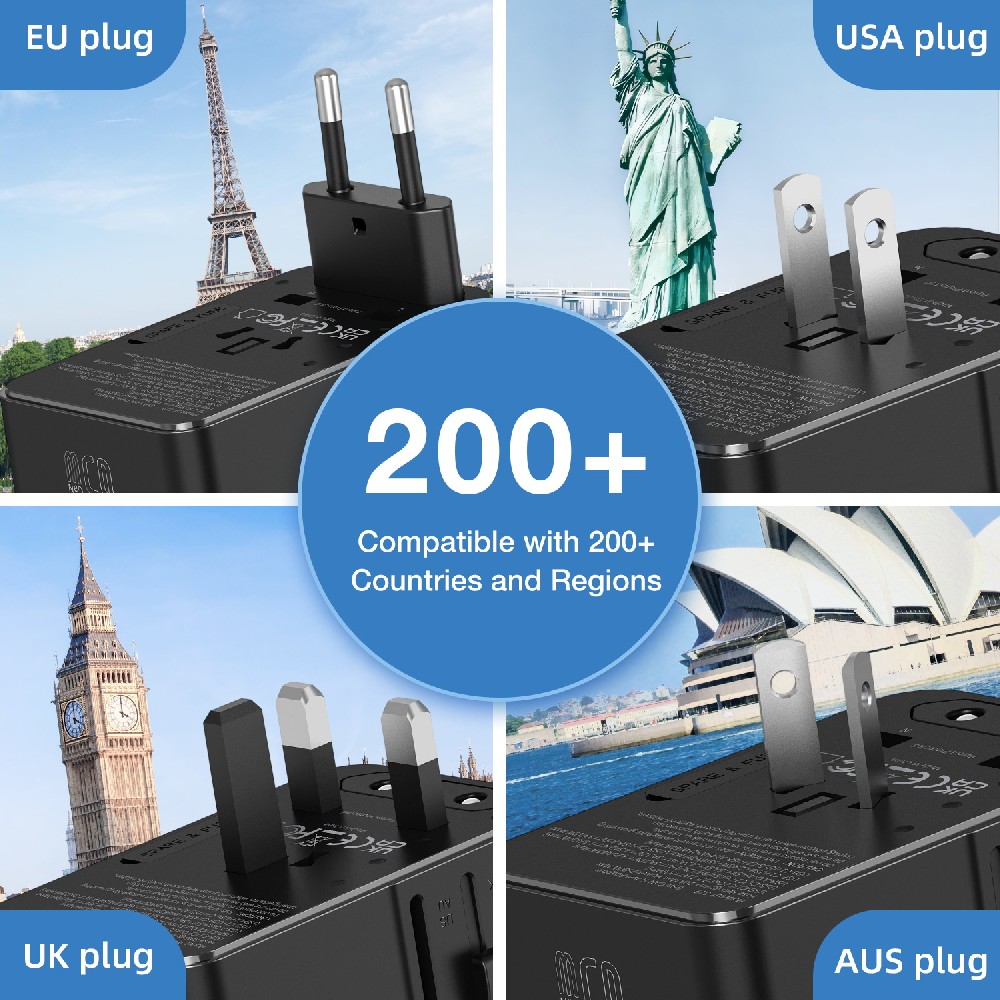Industry news
Universal Plug Adapters: Your Ultimate Guide to Global Power Compatibility
Writer: admin Time:2025-07-14 13:06:32 Browse:180℃
What Is a Universal Plug Adapter and How Does It Work?
Key Features of a High-Quality Universal Plug Adapter
Portability matters too. Top adapters are compact enough to fit in a carry-on, weighing under 100 grams. Our team in 2025 tested 20 models and found that those with retractable prongs were 40% more durable than fixed-prong designs.

Socket Types by Region: Which Ones Does a Universal Plug Adapter Cover?
Americas
1. United States, Canada, Mexico: Type A (two flat prongs) and Type B (two flat prongs + grounding pin)
2. Brazil: Type N (three round prongs in a triangular pattern) alongside Types A and C
Europe
1. EU Countries (France, Germany, Spain): Type C (two round prongs) and Type E (Type C + grounding pin)
2. United Kingdom, Ireland: Type G (three rectangular prongs)
3. Switzerland, Liechtenstein: Type J (three round prongs)
Asia
1. China, Thailand, Singapore: Type A, C, and I (Australia-style)
2. India: Type D (three round prongs) and Type M (larger version of D)
3. Japan, South Korea: Type A (Japan) and Types C/F (South Korea)
Africa
1. South Africa: Type M (three large round prongs) and Type N
2. Egypt, Morocco: Type C (most common) and Type F
3. Nigeria: Type D and Type G (in tourist areas)
Oceania
1. Australia, New Zealand: Type I (two angled prongs + grounding pin)
2. Fiji, Papua New Guinea: Type I and Type C
A good universal plug adapter covers at least 80% of these types, making it suitable for most trips.
How a Universal Plug Adapter Compares to Single-Region Adapters
Feature | Universal Plug Adapter | Single-Region Adapter |
Country Coverage | 150+ countries | 1-5 countries |
Cost | \(20-\)50 | \(5-\)15 |
Size | Compact (fits in palm) | Smaller but requires multiple for multi-region trips |
USB Ports | Often included | Rarely included |
Best For | Multi-country travelers, frequent flyers | Single-destination trips, budget travelers |
Step-by-Step Guide: Using a Universal Plug Adapter Correctly
1. Check Your Device’s Voltage: Look for “100-240V” on the charger. If it says “110V only,” you’ll need a voltage converter too.
2. Identify Your Destination’s Socket Type: Use a resource like WhatPlug.info to confirm. For example, Italy uses Type C and L.
3. Configure the Adapter: Slide or rotate the prongs to match your destination’s type. Some models have a dial; others require attaching a specific plug piece.
4. Connect Your Device: Plug your charger into the adapter’s AC outlet or USB port. Ensure it’s secure.
5. Test the Connection: Insert the adapter into the socket. If your device charges, you’re set. If not, check the prong configuration and try again.
Common Misconceptions About Universal Plug Adapters
Real-World Example: How a Universal Plug Adapter Saved My Business Trip
When to Upgrade Your Universal Plug Adapter
Frequently Asked Questions About Universal Plug Adapters
CATEGORIES
LATEST NEWS
- What are the differences in plugs (chargers) among countries around the world?
- Answers to frequently asked questions by customers
- Worldwide Plug Adapter with Fast Charging for Singapore South Korea
- The Ultimate Universal Travel Adapter with USB-C for Business Trips
- Choosing a Travel Plug Adapter for Germany France Business Trips
CONTACT US
WhatsApp: xxxxxx
Phone: 18128986700
Email: zhozuoplug@hotmail.com
Add: Dongguan City, Guangdong Province, China